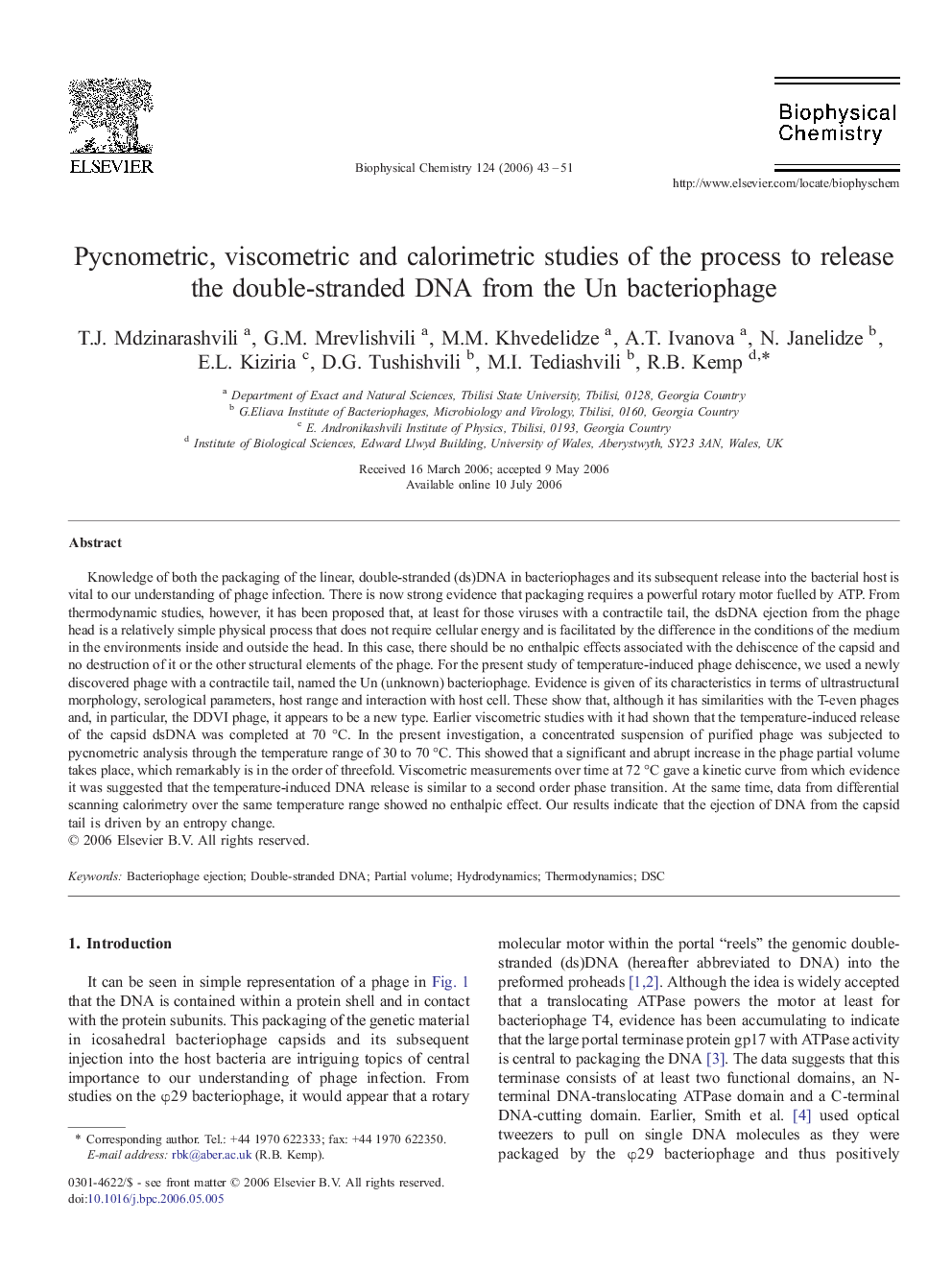| کد مقاله | کد نشریه | سال انتشار | مقاله انگلیسی | نسخه تمام متن |
|---|---|---|---|---|
| 5372266 | 1388871 | 2006 | 9 صفحه PDF | دانلود رایگان |
عنوان انگلیسی مقاله ISI
Pycnometric, viscometric and calorimetric studies of the process to release the double-stranded DNA from the Un bacteriophage
دانلود مقاله + سفارش ترجمه
دانلود مقاله ISI انگلیسی
رایگان برای ایرانیان
کلمات کلیدی
موضوعات مرتبط
مهندسی و علوم پایه
شیمی
شیمی تئوریک و عملی
پیش نمایش صفحه اول مقاله

چکیده انگلیسی
Knowledge of both the packaging of the linear, double-stranded (ds)DNA in bacteriophages and its subsequent release into the bacterial host is vital to our understanding of phage infection. There is now strong evidence that packaging requires a powerful rotary motor fuelled by ATP. From thermodynamic studies, however, it has been proposed that, at least for those viruses with a contractile tail, the dsDNA ejection from the phage head is a relatively simple physical process that does not require cellular energy and is facilitated by the difference in the conditions of the medium in the environments inside and outside the head. In this case, there should be no enthalpic effects associated with the dehiscence of the capsid and no destruction of it or the other structural elements of the phage. For the present study of temperature-induced phage dehiscence, we used a newly discovered phage with a contractile tail, named the Un (unknown) bacteriophage. Evidence is given of its characteristics in terms of ultrastructural morphology, serological parameters, host range and interaction with host cell. These show that, although it has similarities with the T-even phages and, in particular, the DDVI phage, it appears to be a new type. Earlier viscometric studies with it had shown that the temperature-induced release of the capsid dsDNA was completed at 70 °C. In the present investigation, a concentrated suspension of purified phage was subjected to pycnometric analysis through the temperature range of 30 to 70 °C. This showed that a significant and abrupt increase in the phage partial volume takes place, which remarkably is in the order of threefold. Viscometric measurements over time at 72 °C gave a kinetic curve from which evidence it was suggested that the temperature-induced DNA release is similar to a second order phase transition. At the same time, data from differential scanning calorimetry over the same temperature range showed no enthalpic effect. Our results indicate that the ejection of DNA from the capsid tail is driven by an entropy change.
ناشر
Database: Elsevier - ScienceDirect (ساینس دایرکت)
Journal: Biophysical Chemistry - Volume 124, Issue 1, 20 October 2006, Pages 43-51
Journal: Biophysical Chemistry - Volume 124, Issue 1, 20 October 2006, Pages 43-51
نویسندگان
T.J. Mdzinarashvili, G.M. Mrevlishvili, M.M. Khvedelidze, A.T. Ivanova, N. Janelidze, E.L. Kiziria, D.G. Tushishvili, M.I. Tediashvili, R.B. Kemp,